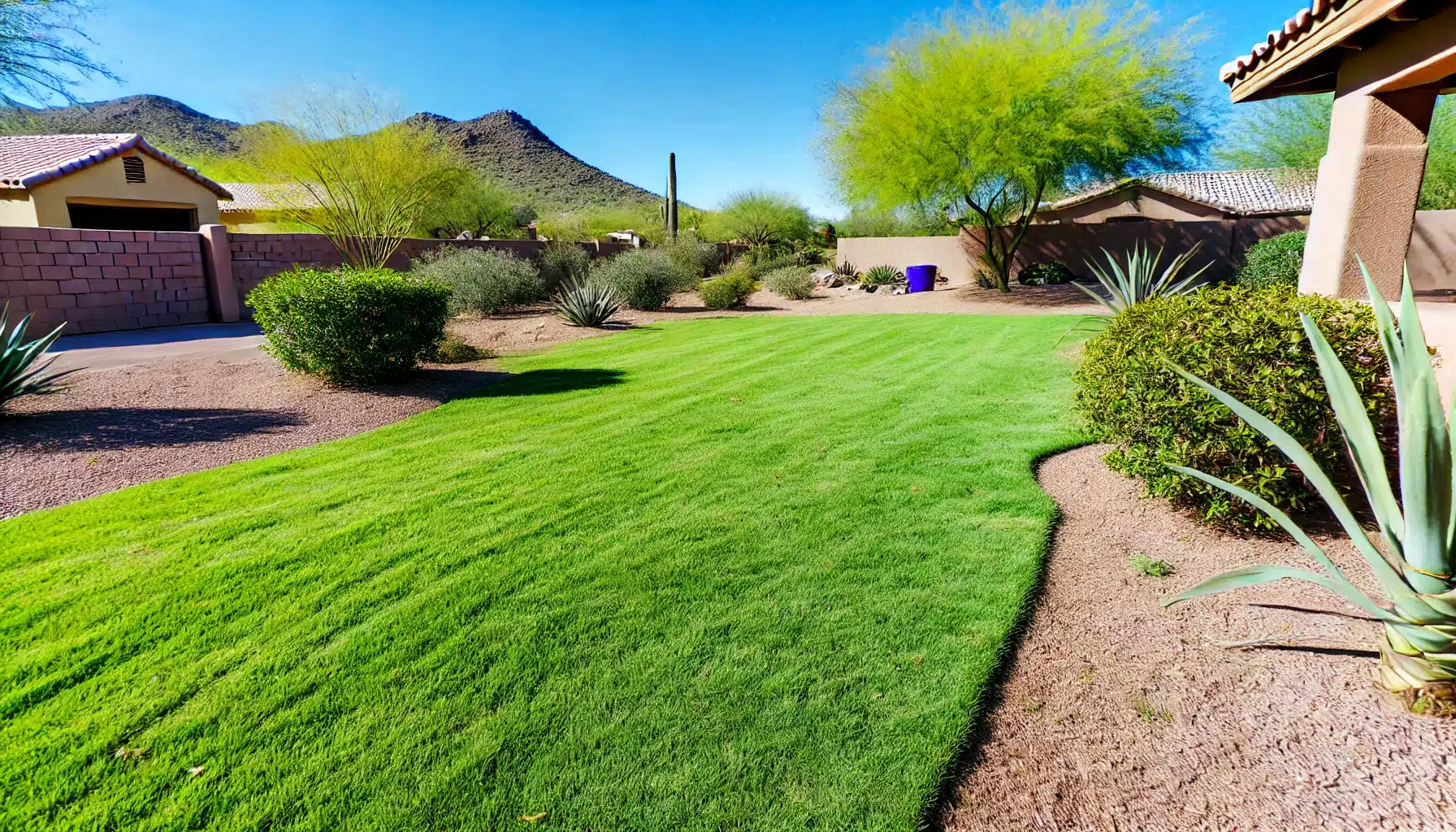A lush, green lawn can significantly enhance the beauty and value of your property. However, achieving and maintaining such a lawn in an Arizona climate requires a well-planned approach. At Red Mountain Landscaping, we specialize in creating stunning lawns that thrive even in the desert heat. This guide will walk you through the step-by-step process of getting a new lawn, ensuring you have all the information you need to make your dream lawn a reality.
Contents
Step 1: Planning and Design
The first step in getting a new lawn is meticulous planning and design. This phase sets the foundation for a successful project and involves several key considerations:
Site Assessment
- Soil Analysis: Understanding the soil composition is crucial. Different types of grass thrive in different soil conditions.
- Sunlight Exposure: Evaluate how much sunlight different areas of your lawn receive throughout the day.
- Water Availability: Consider the availability and source of water for irrigation.
Choosing the Right Grass
Selecting the appropriate grass species is essential for a healthy lawn. In Arizona, the following types of grass are popular:
- Bermuda Grass: Ideal for full sun and high temperatures.
- Zoysia Grass: Tolerant of both shade and sun.
- Buffalo Grass: Low maintenance and drought-tolerant.
Step 2: Preparing the Soil
Proper soil preparation ensures that your new lawn will establish strong roots and grow healthily. Here are the steps involved:
Clearing the Area
- Remove Debris: Clear away rocks, roots, and old grass.
- Weed Control: Eliminate weeds to prevent competition for nutrients.
Soil Improvement
- Aeration: Improve soil structure by creating small holes to allow air, water, and nutrients to penetrate.
- Amending Soil: Add organic matter, such as compost, to enhance soil fertility and drainage.
Step 3: Installing Irrigation System
An efficient irrigation system is crucial for maintaining a lush lawn in Arizona’s arid climate. Consider the following:
Choosing the Right System
- Drip Irrigation: Efficiently delivers water directly to the roots.
- Sprinkler System: Covers larger areas and can be automated for convenience.
Installation
- Design Layout: Plan the layout to ensure even water distribution.
- Install Pipes and Emitters: Properly install the system to avoid leaks and ensure durability.
Step 4: Laying the Lawn
Laying the lawn is a critical step that requires precision and care. There are two primary methods: seeding and sod installation.
Seeding
- Spread Seeds Evenly: Use a spreader to ensure even distribution.
- Cover with Topsoil: Lightly cover the seeds with a thin layer of soil.
- Watering: Keep the soil consistently moist until the seeds germinate.
Sod Installation
- Lay Sod Strips: Place sod strips in a staggered pattern to avoid gaps.
- Press Down: Ensure good contact between the sod and soil by pressing down firmly.
- Watering: Water immediately after installation and keep the sod moist for the first few weeks.
Step 5: Post-Installation Care
Once your new lawn is installed, proper care is essential to ensure it establishes well and remains healthy.
Watering Schedule
- Initial Phase: Water daily for the first few weeks to encourage root growth.
- Established Lawn: Adjust watering frequency based on weather conditions and grass type.
Mowing and Maintenance
- First Mow: Wait until the grass reaches a height of about 3 inches before the first mow.
- Regular Mowing: Maintain the grass at the recommended height for your grass type.
- Fertilization: Apply a balanced fertilizer to promote healthy growth.
Step 6: Dealing with Challenges
Even with the best planning, challenges can arise. Here are common issues and how to address them:
Weeds and Pests
- Weed Control: Use pre-emergent and post-emergent herbicides to manage weeds.
- Pest Management: Identify and treat pests promptly to prevent damage.
Disease Prevention
- Proper Irrigation: Avoid overwatering, which can lead to fungal diseases.
- Healthy Soil: Maintain soil health to reduce the risk of disease.
Step 7: Long-Term Maintenance
A beautiful lawn requires ongoing care. Here are some long-term maintenance tips:
Seasonal Care
- Spring: Aerate the soil and apply fertilizer.
- Summer: Adjust watering schedule and mow regularly.
- Fall: Overseed if necessary and apply a winter fertilizer.
- Winter: Reduce mowing frequency and prepare for dormancy.
Monitoring and Adjusting
- Regular Inspections: Check for signs of stress, pests, or disease.
- Adjust Practices: Modify your care routine based on the lawn’s needs and environmental conditions.
Conclusion
Achieving a lush, green lawn in Arizona requires careful planning, proper installation, and diligent maintenance. By following the step-by-step process outlined in this guide, you can enjoy a beautiful lawn that enhances your property’s curb appeal and provides a perfect outdoor space for relaxation and recreation.
Ready to transform your yard? Request a Free Quote from Red Mountain Landscaping today and let us help you create the lawn of your dreams.




